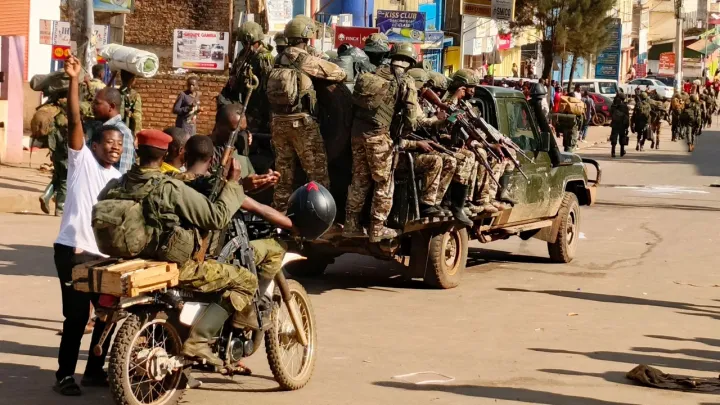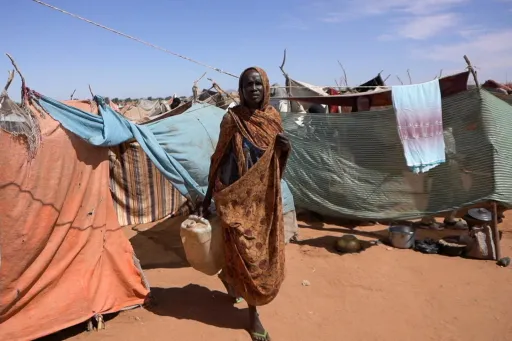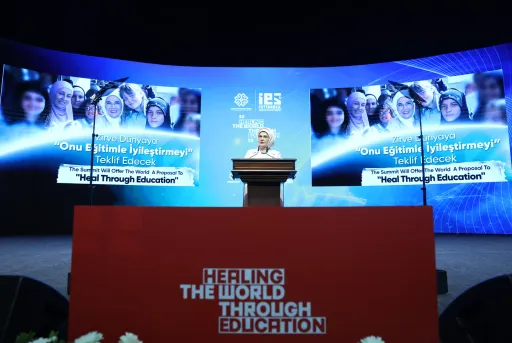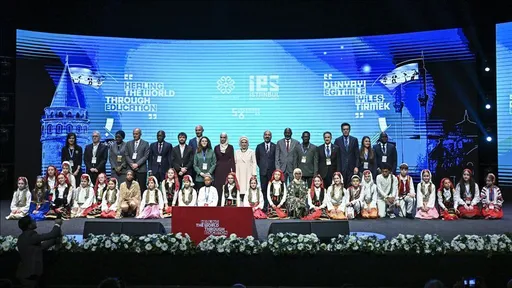Wilma Nchito taught cartography for three decades, introducing generations of students to the intricate science of making maps that accurately represent places and their spatial features.
She would look back with pride and satisfaction at her long career until a video she found online a few years after her retirement shook her professional foundations.
The insights in the video suggested that the world map she had relied on throughout her teaching career had a serious flaw, misrepresenting Africa as a continent smaller than many countries.
"I think it was about six or seven years ago. After what I saw, I was like, 'Wait a minute', Nchito tells TRT Afrika. "As a cartographer, I was upset."
The video showed how countries that appeared larger than Africa on standard maps could actually fit inside the continent with room to spare. It was, as Nchito acknowledges, a jarring visual truth hiding in plain sight.
Wrongful projection
The Mercator projection, created in the 16th century and still the most commonly used world map, shrinks Africa in more ways than one.
The continent spans 30.3 million square kilometres, second only to Asia's 44 million, and stretches across six time zones. Thirty countries, including the US, India, Japan, China, Iraq and much of Europe, can fit within its borders.
Yet on the Mercator map, it looks smaller than many of these individual nations.
"The size of the map of Africa is wrong," says Moky Makura, executive director of Africa No Filter. "It's the world's longest misinformation and disinformation campaign, and it simply has to stop."
So, how did trained cartographers like Nchito miss this for decades? She blames colonial education systems for Africa's cartographic untruth.
"That is the sad reality of our colonial histories. Our education is colonial. The books I read in training for cartography are not written by us. Yes, they will mention the reality, but it's hidden in plain sight. We learn as cartographers and teach that a projection does not reflect the real size," says Nchito.
The technicalities of making maps provide cover for these inherent flaws.
When you transform a three-dimensional sphere onto a two-dimensional surface, distortion is inevitable. Cartographers know this, teach it to new learners, and move on.
Propaganda tools
The particular distortions of the Mercator projection aren't neutral accidents of mathematics.
Prof Murat Tanrıkulu, a geography lecturer at Türkiye's Çankırı Karatekin University, describes maps as being used as propaganda tools throughout history.
"There have been times in history when maps have been used to tell a lie," agrees Nchito. "Exaggerating the size of the territory a particular country has conquered is one of those lies. In Africa's case, I don't know whether it was deliberate, but the reality is that maps can be used to perpetuate a lie."
Tanrıkulu traces Western cartographic interest in Africa to Mali's legendary ruler Mansa Musa making a historic pilgrimage to Mecca in 1324.
"There are 60,000 people on this journey, 2,000 of them soldiers. There are eighty camel loads of gold and 300 kg of gold in each. That's a total of 24,530 tonnes of gold," he explains.
Tales spread of Mansa Musa distributing gold as he and his entourage passed through towns along the route from Mali to Saudi Arabia. Western cartographers then began creating what were known as "Mansa Musa maps".
"In one of the atlases, Musa is depicted with a golden sceptre and seated on a golden throne," says Tanrıkulu.
Merchants are shown walking towards him, drawn by the wealth on display. "Africa suddenly becomes known and the next thing to do is to invade, seize and exploit the continent," says the geography lecturer.
The Berlin Conference of 1884 facilitated what Tanrıkulu calls a "peaceful sharing of Africa by the Westerners, brother by brother".
Intensive mapping exercises followed – imperial and colonial – before Africa was quickly captured.
With Africa under European control, the Mercator map reinforced the political and economic dominance of the continent's colonisers, while subduing the continent's voice and power globally.
Long-term consequences
The distortion isn't merely symbolic.
"I think the real-life implications of it is that when you are dealing with something that is much bigger than it is, your policies and your investment in it are impacted. That's because you are basing it on incorrect information," says Makura.
The ongoing "Correct The Map" campaign, led by Africa No Filter and Speak Up Africa, is pushing organisations to adopt maps reflecting countries' true sizes.
"We are actively working on promoting a curriculum where the Equal Earth projection will be the main standard across classrooms," says Fara Ndiaye, co-founder of Speak Up Africa.
She hopes global institutions, including those based in Africa, will adopt the projection.
The Equal Earth projection was developed by the American cartographer Tom Patterson in 2017. It offers a trade-off: accurate size, albeit slightly distorted shape.
"The same way we are taught that Mercator doesn't show the right size, we have to say Patterson doesn't show the right shape, but the size is correct," Nchito tells TRT Afrika
Selma Malika Haddadi, deputy chairperson of the African Union Commission, says the Mercator projection fostered a false impression that Africa was "marginal" despite being the world's second-largest continent by area, with over a billion people living there.
"It might seem to be just a map, but in reality, it's not," Reuters quoted her as saying. "The African Union supports this campaign, which is closely aligned with our broader goals of reclaiming Africa's rightful place on the global stage, challenging narratives and promoting a more accurate and equitable representation of the continent."
Psychological impact
Nchito has made it her post-retirement mission to write a secondary school textbook addressing the distortion.
"You start Grade 1 and you are told you are small and useless. You grow up, you go to high school, people keep on telling you are small, and they show you pictures of everyone else being bigger than you. It gets ingrained in your mind and you start believing this untruth," she says.
"Not only do the people around you also believe that you are small, you carry yourself as a small person, and you allow people to treat you as a small person because of the misrepresentation. And this is what has happened to our continent. For years, we allowed people to treat the continent as though it's a country."
Africa's vastness isn't limited to size. The continent holds 60% of the world's uncultivated arable land. The Democratic Republic of Congo alone holds 52.8% of the world's cobalt reserves. According to the 2025 Africa Wealth Report, the dollar-millionaire population is projected to surge beyond 200,000 in the next decade.
Nchito believes the next generation of Africans will carry themselves differently if their view of the world isn't distorted from childhood.
"For the next three or four years, we just have to sing, 'Correct The Map'," she says, urging Africans to play their part in shaping the world's view of the continent.
























